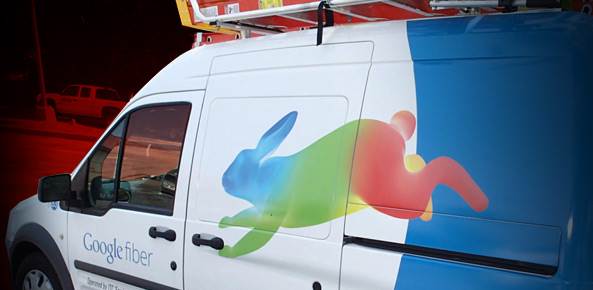Tech giant Google might be learning an important lesson about where it installs high-speed fiber: Go where the cabling is. The company today announced plans to take advantage of existing but unused cabling in San Francisco to bring the high-speed fiber service to some residents in that city.
The broadband service, which promises speeds of up to a gigabit per second, will be available for a selection of residents in apartments and condominiums where fiber-optic cabling is already present.
San Francisco will be the 11th city to secure Google Fiber. Google has run into obstacles in other cities where it’s tried the service, sometimes having to deal with existing copper cabling that can’t support high-speed broadband. In cities where there is no fiber-optic cable already in place, the company has had to install it from scratch — a process that adds layers of time and expense that has left residents frustrated.
Infrastructure Is Key
In a blog post, Michael Slinger, director of business operations at Google Fiber, noted the importance of trying to install gigabit broadband in a location with existing infrastructure, saying that San Francisco had “tremendous potential” for such an effort.
When we reached Teresa Mastrangelo, founder of marketing analysis and consulting firm Broadband Trends, she told us that finding a city with the proper wiring in place is key for Google’s ongoing efforts in this area.
“It absolutely makes sense to use existing cabling,” said Mastrangelo. “It eliminates a number of steps related to permits plus it removes the significant labor costs associated with running cable. The key advantages are reduced costs and quicker time to market.”
Slinger pointed out Google has a lot of work to do before it can provide any details on the gigabit service and when it will be available, or identify specific housing properties that will be connected.
Aimed at Low-Income Residents
Government officials in Huntsville, Ala., are also working with Google to find a way to use the city’s existing fiber network to bring the high-speed alternative to residents.
The broadband service is supposed to be up to 100 times faster than speeds offered by most Internet service providers, which can generally promise speeds of only 12.6 megabits per second, according to recent benchmark studies.
Google’s new service is aimed at low-income families living in public housing, and is intended to provide fiber speeds without cost, or at minimal cost, to residents or condo councils. Since starting six years ago in Kansas City, Google has brought it to 10 cities, including Austin, and San Antonio, Texas; Provo, Utah; and Nashville.







